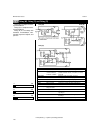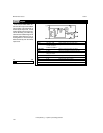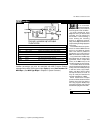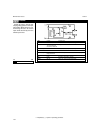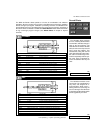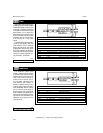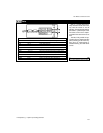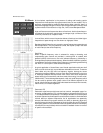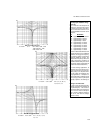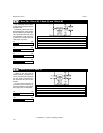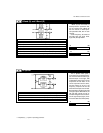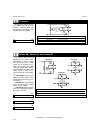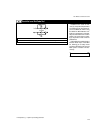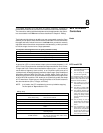
Lexicon
7-38
MPX G2 User Guide
EQ Effects
At its simplest, equalization is the process of cutting and boosting certain
frequencies to make portions of program material more or less audible. This is
generally accomplished by combining filters which affect a specific “band” of
frequencies together with gain controls.The three types of filters commonly used
to perform basic EQ functions are: High Cut, Low Cut and Bandpass/Notch.
High cut filters remove frequencies above a fixed level. As this allows frequen-
cies below the threshold to pass through unchanged, high cut filters are also
commonly referred to as “lowpass” filters.
Low cut filters, which remove frequencies below a fixed level and allow higher
frequencies to pass through are also known as “highpass” filters.
Bandpass/Notch filters allow only a certain range of frequencies to pass through
without attenuation. They are plotted as curves, with a peak (or dip in the case
of notch filters) at the center frequency.
Shelf filters
When a specific frequency value is selected for cutting or boosting, and
compensating gain controls are provided, a shelving filter is created, with
gradual build up of the boost or cut to the selected frequency, followed by a
leveling off beyond the selected frequency. When the effect of the filter is plotted,
it resembles a shelf, with constant levels of boost or cut preceding and following
the “knee” or “corner point” at the selected frequency.
A typical application of these filters uses 2-band equalization with two shelf
filters, one low and one high, to provide bass and treble tone control. These two
filters affect only the high and low frequency signals, leaving the center
frequencies unaltered. Adding a third or fourth band of equalization in the form
of midrange bandpass filters provides more control over those frequencies
where hearing is most sensitive, and where most of the energy in music exists.
(500Hz-4kHz). These midrange bands peak, or dip, at a center frequency which
can be varied to provide much greater control over different aspects of the
sound, allowing for bass or treble rolloff to decrease boominess, thicken sounds,
reduce noise, or increase brightness.
Parametric EQ
Parametric equalizers provide boost and cut controls, sweepable center fre-
quencies, and adjustment of “Q”, or the broadness or sharpness of the EQ curve
— all of the parameters of equalization. This ability to broaden or narrow the peak
at certain frequencies allows specific sounds to be accented or diminished with
minimal effect on adjacent frequencies. As all equalization has potentially
adverse side effects on program material, this ability to precisely adjust only
specific frequencies has the advantage of minimizing the amount of EQ applied
to program material. It also allows the creation of specific effects such as sharply
narrowed EQ curves (notches) which are useful for feedback control or removal
of specific noise artifacts.
High Cut
Low Cut
Bandpass/Notch
High Shelf
Low Shelf



